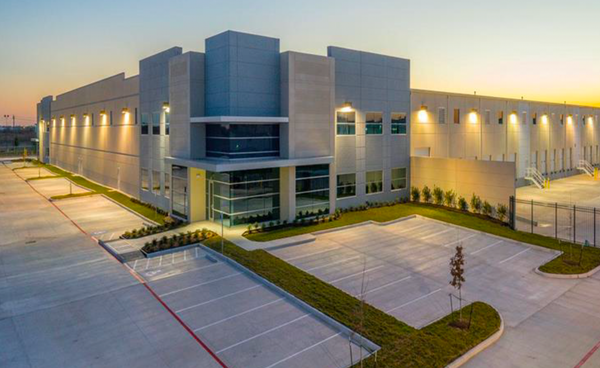Strategic Expansion in Logistics Real Estate: Capturing High-Growth Market Opportunities Across Global Economic Corridors




The global warehousing industry stands at the precipice of an extraordinary transformation, with market revenues projected to reach an impressive $3 trillion by 2030. This remarkable growth trajectory is driven by the convergence of multiple powerful forces reshaping the logistics landscape. E-commerce behemoths and Third-Party Logistics (3PL) firms are increasingly demanding international-grade warehouses equipped with sophisticated automation and modern management systems that have become essential in today's rapidly evolving marketplace.
The appetite for Class A warehouses and light industrial facilities is expanding at an impressive annual rate of 8% globally, with emerging markets expected to witness a doubling of demand by 2030. This surge is powered by the relentless expansion of online retail, comprehensive supply chain modernization initiatives, and groundbreaking technological advancements that are revolutionizing how goods move through the global economy.
Two pivotal economic corridors are emerging as the focal points of this transformation. The Middle Corridor, spanning from China through Central Asia to Eastern Europe, represents a strategic alternative trade route that connects continents via Kazakhstan, Azerbaijan, Georgia, and Türkiye. This corridor offers significantly expedited transit times, enhanced access to burgeoning markets, and improved cost efficiencies that create ideal conditions for thriving warehousing opportunities.
Simultaneously, the India-Middle East-Europe Economic Corridor is establishing a vital bridge connecting Mumbai with European markets via Middle Eastern hubs. These corridors are reshaping the global transport map and creating unprecedented opportunities for logistics infrastructure development.
The Middle Corridor alone exemplifies the phenomenal scale of development opportunities, with transport volumes expected to triple by 2032 while simultaneously cutting transit times in half. The EBRD forecasts an even more dramatic fivefold increase in transit cargo via Trans-Caspian routes by 2035, driven by the urgent need for modern logistical infrastructure that can support growing trade flows.
These developments are not merely about physical expansion but represent a fundamental shift toward sustainable, technology-driven logistics solutions. Modern warehousing facilities are incorporating cutting-edge innovations that enhance operational efficiency while significantly reducing environmental impact, particularly through substantial CO2 emission reductions.
The financial attractiveness of logistics real estate becomes evident when examining key performance parameters. Revenue projections of €81 per square meter, combined with EBITDA margins reaching an exceptional 90%, demonstrate the robust profitability potential within this sector. Net Operating Income (NOI) figures of €43 per square meter further underscore the compelling financial characteristics that make logistics infrastructure such an attractive investment proposition.
Advanced valuation methodologies are being employed to capture both current performance and future potential. For operational projects, valuations utilize Adjusted Net Operating Income with industry-standard multiples of 16.9x, ensuring alignment with comparable market transactions. Pipeline projects are assessed using sophisticated Net Present Value calculations that incorporate Fund Flow from Operations and terminal values, with discount rates based on Weighted Average Cost of Capital models typically ranging around 15%, adjusted for project-specific completion risks.
Large-scale development initiatives are materializing across strategic locations, with plans encompassing over 1,350 hectares of prime land in high-growth markets. These projects feature state-of-the-art facilities ranging from 100,000 to 150,000 square meters, incorporating advanced technological systems designed to optimize operations while minimizing environmental impact.
Specific development highlights include strategic landholdings such as 2 million square meters of freehold property near Tbilisi, Georgia, where initial construction phases covering 60,000 square meters are scheduled for completion in Q1 2025. Independent appraisals conducted under International Valuation Standards have assessed such Georgian investments at approximately €200 million, reflecting the substantial value creation potential within these emerging markets.
The trajectory toward developing over 5 million square meters of premium warehousing facilities by 2033 represents more than simple real estate expansion. This ambitious scope reflects a strategic positioning to capitalize on evolving global trade dynamics while promoting sustainable and innovative growth across vibrant economic corridors.
Market participants are positioning for significant value creation opportunities, with some entities targeting public market entries between 2026 and 2027 on regional exchanges, seeking valuations that could reach €1.5 billion. Such ambitious targets reflect the extraordinary growth potential within the logistics infrastructure sector.
Modern logistics facilities are distinguished by their integration of cutting-edge technologies that serve dual purposes: enhancing operational efficiency and advancing environmental sustainability goals. These technological innovations are not merely supplementary features but fundamental components that drive operational excellence while substantially reducing carbon footprints.
The emphasis on energy efficiency and environmental responsibility is reshaping industry standards, with new facilities designed to achieve significant reductions in CO2 emissions compared to traditional warehousing infrastructure. This focus on sustainability aligns with global environmental initiatives while creating operational cost advantages that enhance long-term profitability.
The rapid transformation of the warehousing and logistics industry represents a fundamental shift in how global commerce operates. The convergence of e-commerce expansion, supply chain sophistication, and technological advancement is creating an environment where strategic infrastructure development can capture substantial value while serving critical economic functions.
These developments are occurring within a broader context of global trade evolution, where alternative routing options and enhanced logistical capabilities are becoming increasingly valuable. The ability to provide modern, efficient, and sustainable logistics solutions positions strategic developers at the forefront of this transformation, offering compelling opportunities for investors seeking exposure to these powerful macroeconomic trends.
Comments